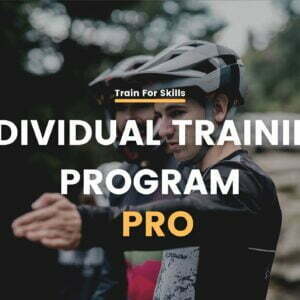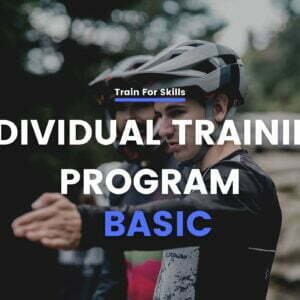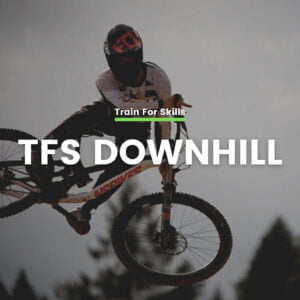Regeneration – Part I
One of the many things that distinguishes professional athletes from amateurs is that the
first know how to rest. They know that regeneration in the training process is crucial. To achieve the desired results we cannot skip it. We can say that training and regeneration are inseparable elements. However, in today’s world everyone wants everything fast, immediate effects, train more, constantly sprint to the endless finish line…
Exactly how quickly and well our body and mind recovers will influence when we can do another effective workout. I have noticed that more and more athletes understand this, but there is still a lack of material on the subject, especially in mountain biking. How do we do it? Why do it this way and not that way? When and what to do? You’ll find the answer in this text.
Stimulus-Reaction
Okay, at the beginning I didn’t mention an important thing – not to mislead someone. If you are a competitor your goal should be to train as often as possible with the highest possible efficiency (for an amateur less is enough – how much? It depends on many factors such as training goal, age, training level etc.). What does this mean? It means that in order to make progress you need to provide your body with an appropriate training stimulus – rest it and then provide it again (Fig.1)
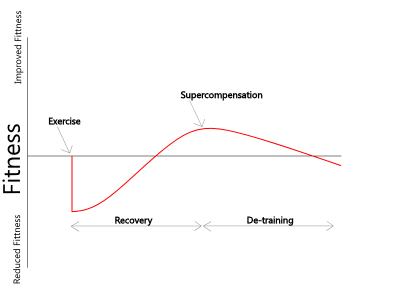
Too long rest or too weak stimulus in case of advanced people may not be enough, and in case of beginners/amateurs it will not give such “good” effect and you will increase “only by 2% instead of 5%”. Vice versa – if the stimulus is too strong and/or recovery time too short your effects will be poor or – what’s worse – in the long run they can get worse if you train too hard. Of course we exclude here the situation in which we intentionally use a period of the so-called overload, followed by a period of normal training and rest, and our form goes up. But not about that now. So, what happens to our body when we provide it with stimuli – i.e. we do a workout?
Training effects
In a concise and understandable way, we can divide the post-workout period into several smaller sub-periods:
I. During and immediately after training
Depending on the volume, intensity and type of training (strength vs. endurance) – there is an increase in heart rate and blood pressure increased concentration of lactic acid in muscles, muscle damage, fatigue central – mental, disorders related to the process of muscle contraction -generally this is the catabolic phase
II. The period up to 24-48h after training is the anabolic phase – our body rebuilds
Our body rebuilds energy substrates, increased oxygen consumption remains, damaged muscles are rebuilt, and the popular DOMS, or post-workout DOMS, may occur.
III. After 36-72h the so-called supercompensation appears, which is an increase in the training ability
This is a window when you should do another workout to get the maximum benefit from it.
training in order for it to bring the maximum benefit, glycogen stores remain
glycogen stores remain completely replenished, there is also an increase in mental abilities i.e. self-confidence. There is also an increase in mental abilities such as self-confidence, energy, optimism or the ability to cope with psychological abilities such as self-confidence, energy, optimism and the ability to cope with training stress are also increased.
*Over a period of 3-7 days if you don’t train again the physiological physiological benefits gained during the supercompensation phase (phase 3)
V. The cumulative effect of series/weeks/months of training
The cumulative training effect that results from many training units or even several training phases. This is closely related to long-term recovery – if your training plan is cleverly laid out and planned, its greatest effects should be seen.
What if there is not enough rest?
We can divide fatigue into two types:
1. Acute – in short it is related to the activity undertaken, it is relatively short term as it subsides within a day or a few days
2. Chronic – can be unfavorable and favorable, it lowers our adaptive abilities and ability to proper rest, resulting in deterioration of performance i.e. decrease in strength or speed and decrease in reserves of energy substrates:
a) A positive situation is when such fatigue lasts for several weeks and is the result of a planned training plan (more specifically, overload/concentrated load, i.e. a period of time when you deliberately use high load training=high volume and intensity) aimed at generating delayed training effects
b) A negative situation occurs when such a period lasts much longer, even several months, our performance deteriorates or does not improve. In such a situation overtraining is highly probable.
Unfortunately there are still many myths about overtraining circulating in our community: “If I only trained, I would get overtrained” or “Athletes need to rest in order not to get overtrained” – this is true, but such cases happen very rarely. Science clearly shows that only about 7% to 20% of professional athletes show signs of overtraining. The most common situation we can observe is fatigue (not overtraining), which we can also divide into two types.
Types of overtraining
1) The first one involves our muscular system. How do you recognize it? – You are constantly hungry, even though you sleep many hours you still feel tired. In this situation the cure is simply to eat more and sleep more – extra calories during the day and extra naps should help
2) The second type involves our nervous system, and here things get more complicated because our nervous system takes 5x longer to regenerate than our muscles, which is also more dangerous. Symptoms can be trouble concentrating, trouble sleeping, waking up in the middle of the night, constant agitation, sudden aggression, loss of self control, getting upset in situations where it usually doesn’t happen. The best way is, again, the easiest way – mental relaxation, e.g. do something fun, go for a walk, play with your children if you are a parent, do something you love, etc.
Factors influencing recovery
The time after which phase III (supercompensation) occurs depends on how quickly the athlete recovers. To simplify, we can list a few of them:
- Type and intensity of the training unit – the more taxing the workout, the closer to maximum capacity the recovery time will be longer,
- Age – the older you are, the slower you will recover,
- State of training – world class athletes have a better ability to regenerate, overtrained years do their job,
- Change of time in time zones – after long flights, where we cross many time zones, especially flying to the east, we can experience the phenomenon of Jet-lag, the body has to adjust its clock, and its performance may be then strongly disrupted,
- Nutrition
- Sleep
- Hydration
- Stress of any kind (work, family, responsibilities, etc.) – the more your head is occupied with something, the less time your body has to rest, stress hormone blocks the immune system which increases the risk of infection or disease and slows down recovery,
- Lifestyle – highly active vs passive,
- Type of work – physical vs. office
Some of them we can improve “immediately” while others are related to many years of action or are even genetically conditioned. These factors are also the basis our regeneration.
Foundations of regeneration
I consider the foundations of regeneration to be the actions that every true athlete should follow like God’s 10 commandments every day, although here there are only 5 sub-items:
1) Sleep
Next to food, one of the most important activities in life, without which a person is not able to function, we devote about 1/3 of our life to it – which clearly says that it should be (if it is not already) a priority. Sleeping less than 5-6 hours, our body produces the stress hormone cortisol, which lowers immunity and breaks down collagen and proteins that build muscles, tendons and ligaments – which increases the risk of injury. In addition, our skin ages faster then, so get more sleep! When we don’t get enough sleep, the brain may not have time to remove toxic proteins from neurons, making us less creative, lacking sober thinking, more prone to negative emotions. As it turns out, sleeping long we also become slimmer.
How much sleep is enough?
Research clearly showed that people who slept 5.5 hours compared to 8.5 hours (energy use was almost the same) lost the same amount of kilograms, but those who slept less lost only 20% of fat in relation to the total weight lost. What does it mean? Sleeping more means that you lose less muscle-> more fat during the reduction than if you don’t get enough sleep. An additional aspect is that the group sleeping less felt more hungry – sticking to a diet is then much harder. Sleeping 8h+ is the best possible supplement – 10-15% higher testosterone levels, faster sprint times, 2x less risk of injury, 3x less chance of getting sick or learning new activities faster.
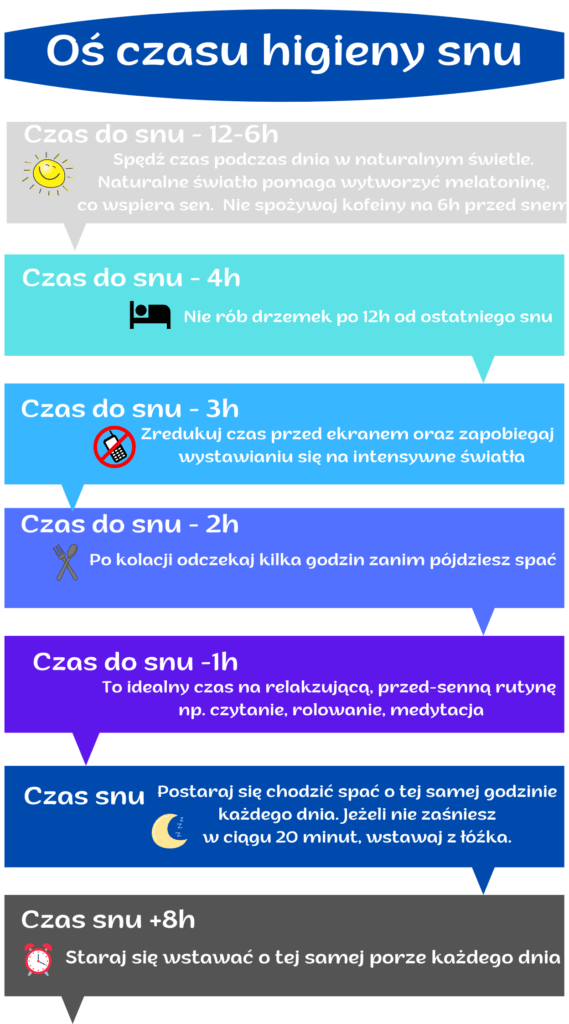
Practical tips for better recovery:
- Try to fall asleep at about the same time, find the most convenient time for you, preferably before midnight between 22-24 to develop your own circadian rhythm, and the best time to get up is between 6-8am.
- Find a comfortable position in bed, preferably on your side or back. Sleeping on your stomach you risk getting sore when you wake up and your muscles will be tense, not allowing them to resting properly.
- Cover the windows and turn off all possible distractions, lights, etc. For 1-2 hours before bedtime avoid watching TV, sitting in front of the computer or on the phone. It is worth it to spend this time reading a book to “clear the mind”.
- The room should be neither too hot nor too cold – the optimal temperature is 20-22 degrees Celsius.
- For a deep and pleasant sleep I recommend taking about 1000 mg of elemental magnesium just before going to sleep and do not drink coffee after 15:00.
2) Hydration
Our body is made up of 60-70% water, while dehydration of just 1% reduces physical performance by as little as 10%! One way to calculate the amount of fluids is to drink 0.033l per kg of body weight (65kg x 0.033l = 2.145l).
This amount will vary depending on many factors i.e. time of year, type of training, personal biology etc. Therefore the best indicator of whether we are drinking properly is urine, or rather its color. Ideally it should be light yellow – reminiscent of straw, but the darker it is (yellow->dark yellow) it is a sign for us to drink water! One habit you can develop is to drink a glass of water immediately after getting out of bed – your body needs it after a whole night without water. Don’t forget to take water with you to workout, bike and to work/school/university etc.
3) A well planned training plan
It’s only in 3rd place because without water and sleep we won’t be able to function. By balanced training I mean one that is planned in time, includes units in which we give 100% of ourselves, but also regeneration, which is tailored to us, our capabilities and our goals. It corrects our body’s weaknesses and strengths and helps us to develop in the desired direction. Wisely and sensibly arranged will make us improve our abilities, but at the same time we will not ‘get stuck’ at the same time, so it is an issue that should not be forgotten by each of us. But unfortunately, what can often be seen in public gyms, the group of people who know how to do it correctly, is not particularly numerous, so remember that regardless of the field – to make concrete progress you need cooperate with specific, experienced, full of knowledge people, in case of physical preparation – a competent trainer.
4) Nutrition and supplementation
Probably all of us like to eat something tasty. Food is our fuel, if we put water in the car tank instead of petrol, we wouldn’t get very far… That’s why proper nutrition and regeneration is so important. I don’t want to go deep into the subject, because I could write about it for a long time, and you can find principles of healthy nutrition almost everywhere. My goal is to make you aware that what you eat directly affects your daily mood and your results. It’s not about having a perfectly laid out diet plan, it’s about developing healthy eating habits, because they are what will take you much further in the long run.
What we eat, when, how much, etc. should be adjusted to our individual biology, lifestyle, work or budget. When it comes to supplementation it is similar, it should be adjusted to
your needs, training, lifestyle, training goals (e.g. muscle building/reduction/pre-race phase) or possible deficiencies (for ambitious athletes – I recommend doing tests 2-3 times a year to detect possible underestimation of vitamin or mineral levels or other ailments).
5) Other forms of regeneration
As the fifth element I consider all other forms of regeneration, and these are all active regeneration techniques, although in fact fulfilling the first four points is enough for 80% of people who train, and even then hardly anyone follows them 100%. Nowadays athletes and coaches debate about whether cold or hot showers are better, and which ‘training gadgets’ should be included or not in the forms of regeneration, and often forget about what will give us the most benefits…. the basics (Fig.3)
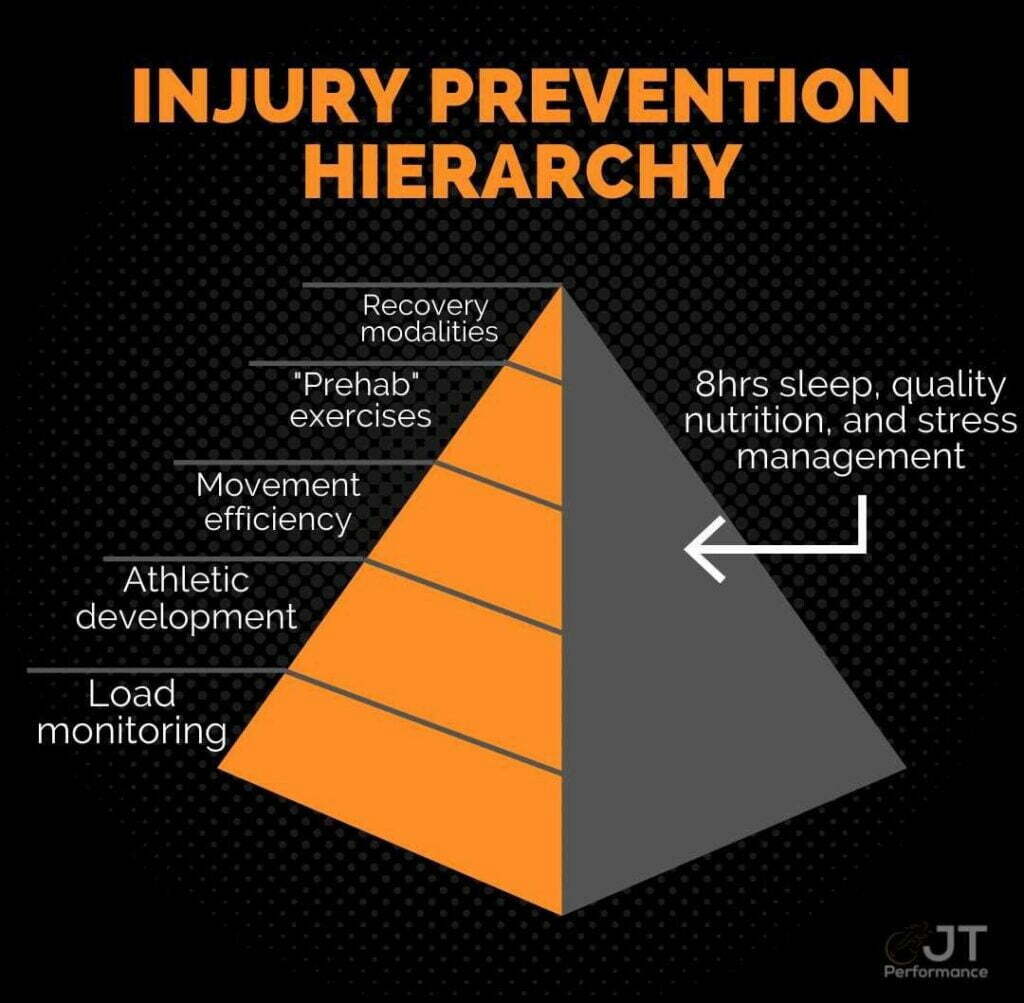
If you want to learn more about specific recovery techniques and practical wellness strategies, another article about them will be coming soon.
Author Text: Train For Skills coach, Wiktor Jurkowski @wiktorjurkowski1
Bibliography:
- Periodization Training For Sports, T. Bompa, C. Buzzichelli
- Secrets of motor preparation in sport, A. Pacek, M. Babiarz
- 365 Advanced Training Hints, A. Pacek, M. Babiarz
- JT Perfomance Instagram Article: https://www.instagram.com/p/CTWvukqMmBX/

